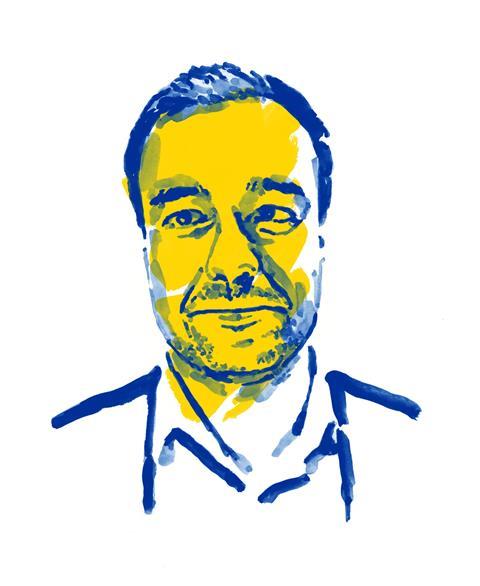A warm winter is making working through power cuts more manageable
Ilias Shcherbakov is an academic secretary at the Institute of Single Crystals in Kharkiv. Airstrikes in early 2022 damaged some of the Institute’s buildings; Shcherbakov remained at work to maintain expensive research equipment throughout the Russian invasion

The last artillery strikes on our site were, I think, at the end of August. After the Ukrainian counteroffensive, Kharkiv is now out of range of Russian artillery, but still not the missile strikes. I mean, we have warnings today about the missile strikes on Kharkiv, but other cities are being hit, you know, today is just a missile strike day.
It’s OK for now. We even have electricity, at least in the office. At home, I don’t have electricity for about 4-5 hours per day.
In the evening the city becomes like it’s from some horror movie, always dark streets and people use the subway system to get quickly from their office to their homes. But our commuter train system works well and it allows the city to revive at some level, and people actively come back. From day to day, the number of people in grocery stores and in public transport increases. Almost two-thirds of our colleagues have returned. About 15% are still outside Ukraine, and there’s a number who don’t have a place to live; their houses were destroyed.
We succeeded in restarting the institute’s activity at low-mid level. Our customers are mainly from pharmaceutical companies and agriculture, as unfortunately our heavy industry is destroyed. Our chemistry plant now focuses on producing basic chemicals to be used by pharmaceutical companies for producing very essential drugs as we can’t import a lot for now. It’s not an easy task as our basic chemical industry is destroyed because it was situated in Donetsk, Zaporizhzhya, and Dnipropetrovsk Oblasts, so it’s hard to rebuild even such elementary production cycles as the ones for alkali or for acids.
We made a lot of effort to purchase power supplies to keep our equipment running during the blackouts, and to supply a cool-down procedure for our equipment to be safely shut down. On the first day, we suffered electricity loss, and all our crystal growth equipment was either damaged or the electric parts just burned out.
I can hardly imagine what we’d do if it was -20°C for a week or two
Purchasing equipment and spare parts for repairs was tough. There were no spare parts here in Ukraine. We had to contact manufacturers, but until maybe October or November nobody even tried to listen to us: ‘come on, guys, look at your situation. How can you do anything there?’ But in October, we collaborated with a very good charity called Peaceful Heaven of Kharkiv on a campaign called ‘Help the Institute for Single Crystals’. We appealed to our colleagues outside Ukraine to donate money for us to purchase equipment, but in late November–December, we realised we’d better request the equipment itself because the prices were going up daily – yesterday it would cost 1000$, and today it’s already 1100$. Despite these problems with logistics in February we succeeded to ship uninterrupted power sources and install them ourselves because certified technicians won’t come here
Luckily we are having a very warm winter, so it helps us to run our equipment. For example, we need to use helium pipelines made of PVC tubes. When the temperature is low, the tubes shrink and all the joints are unpressurised, and the helium just leaks. Or with chromatographs, we had to put some heaters into a small room to prevent the freezing of water or organic phase solutions inside. We hope we keep having a warm winter until March or April because I can hardly imagine what we’d do if it was -20°C for a week or two.
This article is based on an interview performed by Anastasia Klimash
Ukraine’s chemists persevere through a year of war

One year into the full-scale Russian invasion, Ukrainian chemists face blackouts and missile strikes
- 1
- 2
- 3
- 4
- 5
- 6
 Currently
reading
Currently
reading
Chemists in Ukraine revisited: Ilias Shcherbakov
- 8



























No comments yet